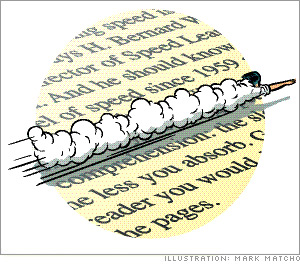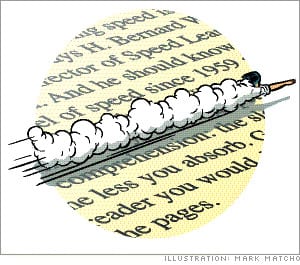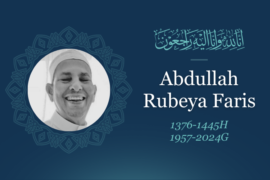 Click here to read full series on How to Speed-Read
Click here to read full series on How to Speed-Read
We continue from where stopped on The Secret Tricks on How to Speed-Read Part 1, this part will introduce you to some basics on speed-reading, and we will expand on this information in our advanced study in Part 3.
What I present here is only a drop of the ocean; if you’re interested, I would encourage you to use these as a starting point of your own research into deep speed-reading because it can help in many spheres of your knowledge development.
How to Study the Material in ‘Bite-Sized Chunks’ (Especially if you feel overwhelmed with the information!)
It is not knowing lot of things that matter, it is applying them that matters most. When you learn speed-reading, what you need is to do is to learn ONE technique. Make sure you understand it well, and then go and practice that ONE skill you learned, like any skill practice makes mastery of the skill. Clock your timing and see how much you have improved over set intervals eg. weekly, fortnightly, monthly. And then move to learn the next technique, and repeat the process.
Find a study buddy
It can be difficult especially if you’re studying a subject which requires chunks of reading, and often we have to motivate ourselves to even read so I encourage you to have a study buddy for this. Ask your friend to join you today and make a commitment to finishing reading a set book together!
’Speed Reading Vs Photo Reading’
There is difference between speed-reading and photo reading, the distinction is that speed reading is about increasing your current speed with good comprehension of the material. There is not much emphasis placed on retaining the data for a long time, though there are techniques to help to remember information for an extended time frame.
In photo-reading, you learn about techniques to remember the things you read in a way you can recollect them anytime. You would need a different set of skills for it. Photo reading is out of scope of this article series, and I will cover it in detail in another future article series inshaAllah.
5 Strategies for Effective Speed-Reading
1) Carving out time to read:
To speed-read, you need to become a reader. Irrespective of how slow or fast you read, you should dedicate a minimum of 30 min of reading daily. Without step 1, you will not have practice time to put the speed reading techniques into practice. So commit yourself to 30 minutes of reading every day. Also commit to finish the book you have started.
However, do note that the amount of time to devote for the study cannot be determined by a rigid formula, you are the best person to decide on your reading time per day (just use 30 minutes as a minimum).
2) Prepare for Speed Reading:
Yes, there is some preparation we need to do!
- Selecting a quiet and comfortable environment: This step is important. Make sure the place you choose for reading is quiet and comfortable. This is essential especially during the early stages of your study process.
- Don’t regress as you read: One thing we do when we read is to go back to what we have read. Resist that. If you feel you missed something, don’t worry, you can read it later at another point in time (if the material is so important you can write it down as you go along). For now, try to continue reading without going backwards.
- You should see the whole page: Make sure you hold the book in a way you can see the whole page. This helps to make sure you can easily master the next point.
- Have your page ready to be turned: Make sure you have the page in a position that is ready to be turned. This creates a sense of movement for your mind to finish this page, and move onto the next!
- Don’t let your mind wander when you read: You cannot remember or comprehend what you have covered visually when your mind wonders elsewhere. This might seem very simple, but many times your slow reading speed will be directly related to this.
- Time-boxed reading: If you read with a specific time deadline – like: ‘I will finish this material by end of today’, then you will be more focused to go over the material before the deadline, and this will help to improve your speed.
3) To read any book using speed reading, you should have an answer to the “Why” and “What for?”
- Why did you pick this book to read?
- What for: is there anything you want to achieve by reading this material?
For example if you have a time management book that you are interested in reading:Why? You chose to read it because your friend recommended it maybe. What for? You want to find some ways to manage your time better. This gives clarity and a sense of motivation to read.
4) Get a Bird’s Eye View of the Book:
Whilst in your helicopter, look out for the information below:
- Copyright date: To tell you how current the material is. This puts the information in historical perspective and can allow you to be more critical.
- Table of contents: This gives you an outline of the book/magazine and which topic will be interesting to you, even helping you short-cut only to chapters you need!
- About the author: This information gives you the whole backgrounds about his/her expertise, where he/she is coming from, and what you might expect to find in the material.
- Front matter: This includes introduction, preface, foreword, etc which can add value to the book’s message.
- Thumb through the book: Stop briefly for layouts and typography, maps, diagrams, charts etc.
5) The “Meat” of a Chapter:
This is what we all want when we read a book, only the best parts. Start with these areas:
- Title: It’ll reflect the subject or theme of the material.
- Introduction: Points you in the direction author wants to lead you.
- Subheadings: Subheadings are the legs of the meat. When you come to a new subheading, you know you have entered a new subtopic area.
- First sentence of every paragraph: Focus on the first line! By just reading the first line, you should know what that paragraph is about!
- Conclusion: Typically the last paragraph or two that summarizes the ideas gives you an overview of the full chapter. Make sure you read the conclusion and understand it well.
Practising the above steps will only take few minutes of your time and it should come as the first approach to handle any book you want to read.
How to Implement what I’ve Learned Above?
My recommendation is to start working on the “Not to regress” step and reading for minimum 30 minutes every day.
You can choose which one best suits you. You need not implement everything suggested, rather write down the 3 best ideas you want to implement. Then, take One idea you want to implement this week.
Summary:
In this part, we continued from where we stopped on Part 1, and discussed some key strategies you could apply to improve your reading-speed. If you can do what I explained in this part, you should be able to dramatically improve your reading.
InshaAllah in the final part of this series, we will get into advanced techniques, and that part is for students who have mastered the contents in this part and can apply them in their daily reading.
Before you move to the next part, take time to practice what we learned in this part, and when you are ready to go to next level, read Part 3. Until then, practice, practice and practice because practice makes perfect (well, almost!)
To be continued soon..
About the Author
SuccessMuslim (www.successmuslim.com) is a personality development, success coaching and mentoring website for Muslims. “Success, achieving our best, win duniya and akhira” is the theme of this site. SuccessMuslim is the first Islamic website to completely focus on personality development articles topics. And it is FREE.




